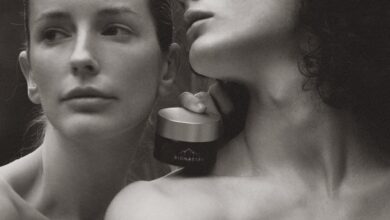No matter how minimal we set out to be, it’s incredibly easy for our homes to become cluttered with things we don’t need, want, or love. It’s often our natural instinct to hold onto possessions for security or out of guilt and fear of regret.
Spring cleaning is a restorative practice which allows us to spend time pondering which possessions really add value to our lives. The process encourages us to work to open up the space in our home, cultivating a light and rejuvenating space, free from clutter.
To streamline the process, ensuring that we make the most of the spring clean declutter, here are 8 tops to keep in mind.
Compartmentalise.
Clutter can spread to every square inch of our homes. With so much work to do, it’s easy to get stressed and to react by rushing through the process to put it out of our minds.
The reality is, however, if we rush it, we’ll overlook things, meaning we’ll have to return to the process at a later date.
Instead, compartmentalise the task into smaller, more manageable parts. Build a thoughtful to-do list on a loose timeline and tackle one section of your home at a time.
Declutter by category, not by room.
This is the mantra of Marie Kondo, spearhead of the KonMari movement.
Instead of decluttering your bedroom, for example, she recommends going through all of your items in a specific category. So, if you decide to tackle clothes, find all the clothing dotted around your entire home, not just your bedroom. Gather everything in the category you’re decluttering and place it one single pile.
This technique allows you to see exactly how many items you own in a category, allowing you to easily identify duplicate, broken, or neglected items in that grouping. Let go of items that you clearly have no need for!
Construct a capsule.
A capsule wardrobe is a subset of your overall wardrobe that you fill with a selection of clothes that are appropriate for a particular season. The process of building a capsule wardrobe forces you to be mindful about your relationship with all of your items of clothing.
This is one of the most popular storage hacks in minimalist circles. By separating your clothes into categories for different seasonal requirements, you can stow away items you don’t imminently need, freeing up space in your regular wardrobe rotation.
Crafting a capsule for winter, summer, spring, or fall also helps you to identify items in need of decluttering, having not been worn for an entire season.
This technique can also be applied to other items, such as seasonal decorations or kitchen goods.
Purge the overlooked.
Our homes are filled with categories of items that we use everyday, but often these categories contain more items than we’ll ever be able to use.
Duvet covers, wine glasses, plastic tupperware, and towels – there is no need to have 10 of each item per 1 person living in our home. These items take up valuable space and serve no purpose.
Items like these are easily overlooked but they present a simple way to declutter during your spring cleaning process.
Out with the old.
Quick decluttering wins can be found lurking at the back of your kitchen cupboard or medicine cabinet.
Scour your home for items that are past their expiration date. Whether it be makeup, food, or medicine, they add no value to your life and, again, are taking up room which could be put to better use.
Ticking this task off of your to-do list will give you a feeling of fulfilment, encouraging you to continue with the process.
Lighten it up
Decluttering requires motivation and energy. At times, it can become monotonous and tiring.
Inject a little excitement into the process by playing some music or a TV show in the background to distract you from the long affair of scrubbing, folding, and organising.
When you add small, lighthearted touches to your spring cleaning activities, time passes by quickly and you’ll find it more enjoyable, helping you to preserve your energy for a longer period of time.
Boxes and baskets.
Your decluttered items can easily blend back into your go-through pile if you don’t employ an organisation system to sort them out.
Before you begin to declutter any given category, make sure you have 4 baskets, boxes, or bags on hand to categorise items you’ve gone through.
You should have a box for keeping, recycling, selling, and donating respectively. These boxes will save you doing double the work before you realise you’re attempting to declutter items you’ve already designated for donation!
Does it bring you joy?
The decision to keep or declutter our belongings often feels intuitive. Your approach should be both practical and emotional. With each item, you should follow Marie Kondo’s advice and ask yourself if it brings you joy.
This joy can come from the sentimental value it holds or the practical use it has. If you can see yourself without that item in your life, then it’s most likely a sign that you should part with it.
To declutter during your spring cleaning process, you need to be mindful, attentive, and patient. Following these top tips will smooth out the process for you, leaving you with a beautifully clutter-free home to unwind in after all your hard work.
About the author: Laura Fields is a writer, lover and dreamer, based in drizzly London town. A freelance journalist, she’s recently escaped from the topsy-turvy world of magazine journalism to write about home, travel and lifestyle on the web.




